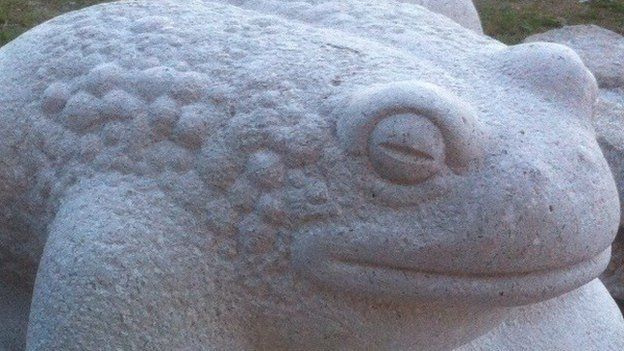Shipwrights Way sculptures unveiled in Hampshire
- Published

A dozen new stone sculptures which celebrate local heritage have been installed on a cycle path in Hampshire.
It is hoped the first 12 of a total 20 carvings, including a Natterjack toad and an oyster, will encourage people to walk and cycle along Shipwrights Way.
East Hampshire District Council said they represent geographical, historical and natural features of the area.
The subjects were suggested by local people and carved by artist Richard Perry from Portland stone.
They have been funded by the district council, Hampshire County Council and South Downs National Park Authority.
They can be found on the Hayling Billy trail, in Rowlands Castle, at the Buriton chalk pits, Queen Elizabeth Country Park, Petersfield, Steep, Broxhead Common, Liss Railway Walk and Bordon Inclosure.
East Hampshire District councillor, Conservative Ken Carter, member of the Shipwrights Way Steering Group, said the sculptures were a "unique feature".
"I hope they will also prove to be a matter of local pride, particularly for those groups who contributed their ideas during the design process," he added.
Andrew Lee, from the South Downs National Park, said it was "wonderful" to see the first of Mr Perry's sculptures "in their new home."
The remaining eight sculptures are due to be installed towards the end of March/early April.
Shipwrights Way links villages and towns in east Hampshire, from Alice Holt Forest in the north to the Historic Dockyard in Portsmouth to the south.
Each sculpture has its own QR code that will explain more about the carving.
- Published7 February 2014
- Published8 January 2014
- Published27 February 2013
- Published30 August 2012